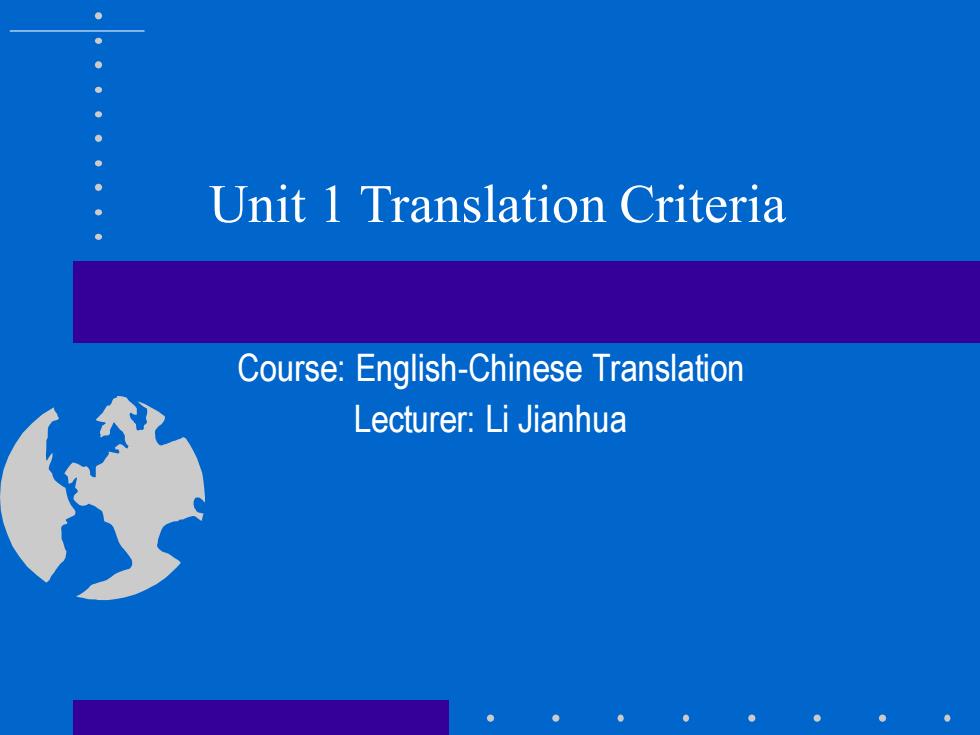
Unit 1 Translation Criteria Course:English-Chinese Translation Lecturer:Li Jianhua
Unit 1 Translation Criteria Course: English-Chinese Translation Lecturer: Li Jianhua
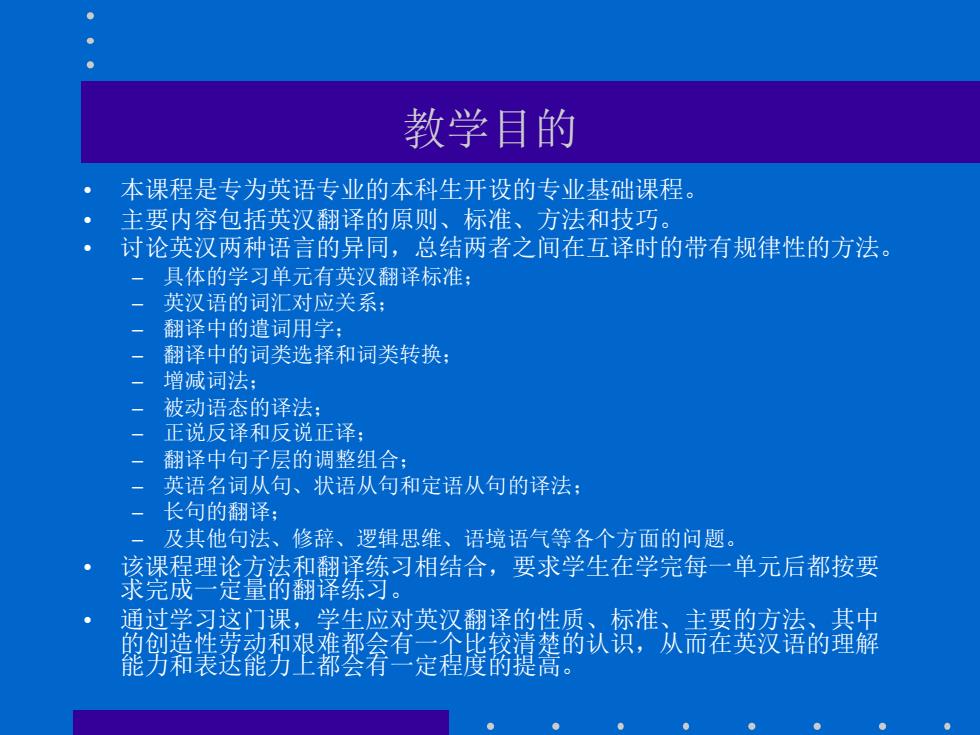
教学目的 本课程是专为英语专业的本科生开设的专业基础课程。 主要内容包括英汉翻译的原则、标准、方法和技巧。 讨论英汉两种语言的异同,总结两者之间在互译时的带有规律性的方法 具体的学习单元有英汉翻译标准 英汉语的词汇对应关系: 翻译中的遣词用字: 翻译中的词类选择和词类转换: 增减词法 被动语态的译法: 正说反译和反说正译: 翻译中句子层的调整组合: 英语名词从句、状语从句和定语从句的译法: 长句的翻译: 及其他句法、修辞、逻辑思维、语境语气等各个方面的问题 该课程理论方法和翻译练习相结合,要求学生在学完每一单元后都按要 求完成一定量的翻译练习。 通过学习这门课,学生应对英汉翻译的性质、标准、主要的方法、其中 的创造性劳动和艰难都会有二个比较清麓的认识,从而在英汉语的理解 能力和表达能力上都会有一定程度的提高
教学目的 • 本课程是专为英语专业的本科生开设的专业基础课程。 • 主要内容包括英汉翻译的原则、标准、方法和技巧。 • 讨论英汉两种语言的异同,总结两者之间在互译时的带有规律性的方法。 – 具体的学习单元有英汉翻译标准; – 英汉语的词汇对应关系; – 翻译中的遣词用字; – 翻译中的词类选择和词类转换; – 增减词法; – 被动语态的译法; – 正说反译和反说正译; – 翻译中句子层的调整组合; – 英语名词从句、状语从句和定语从句的译法; – 长句的翻译; – 及其他句法、修辞、逻辑思维、语境语气等各个方面的问题。 • 该课程理论方法和翻译练习相结合,要求学生在学完每一单元后都按要 求完成一定量的翻译练习。 • 通过学习这门课,学生应对英汉翻译的性质、标准、主要的方法、其中 的创造性劳动和艰难都会有一个比较清楚的认识,从而在英汉语的理解 能力和表达能力上都会有一定程度的提高
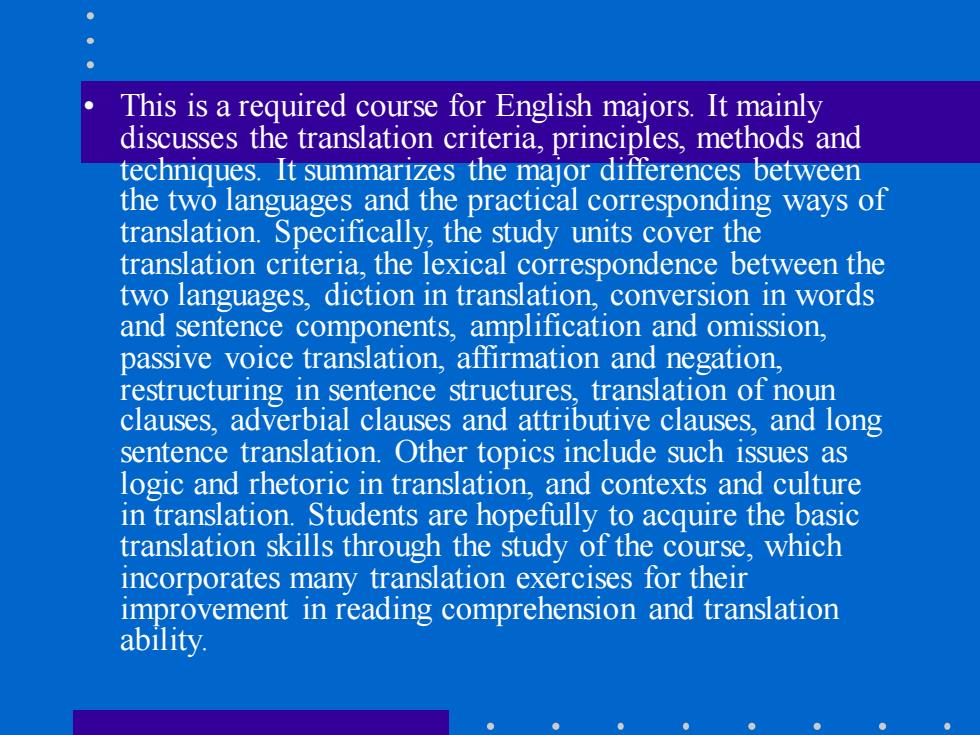
This is a required course for English majors.It mainly discusses the translation criteria,principles,methods and techniques.It summarizes the major differences between the two languages and the practical corresponding ways of translation.Specifically,the study units cover the translation criteria,the lexical correspondence between the two languages,diction in translation,conversion in words and sentence components,amplification and omission, passive voice translation,affirmation and negation, restructuring in sentence structures,translation of noun clauses,adverbial clauses and attributive clauses,and long sentence translation.Other topics include such issues as logic and rhetoric in translation,and contexts and culture in translation.Students are hopefully to acquire the basic translation skills through the study of the course,which incorporates many translation exercises for their Improvement in reading comprehension and translation ability
• This is a required course for English majors. It mainly discusses the translation criteria, principles, methods and techniques. It summarizes the major differences between the two languages and the practical corresponding ways of translation. Specifically, the study units cover the translation criteria, the lexical correspondence between the two languages, diction in translation, conversion in words and sentence components, amplification and omission, passive voice translation, affirmation and negation, restructuring in sentence structures, translation of noun clauses, adverbial clauses and attributive clauses, and long sentence translation. Other topics include such issues as logic and rhetoric in translation, and contexts and culture in translation. Students are hopefully to acquire the basic translation skills through the study of the course, which incorporates many translation exercises for their improvement in reading comprehension and translation ability
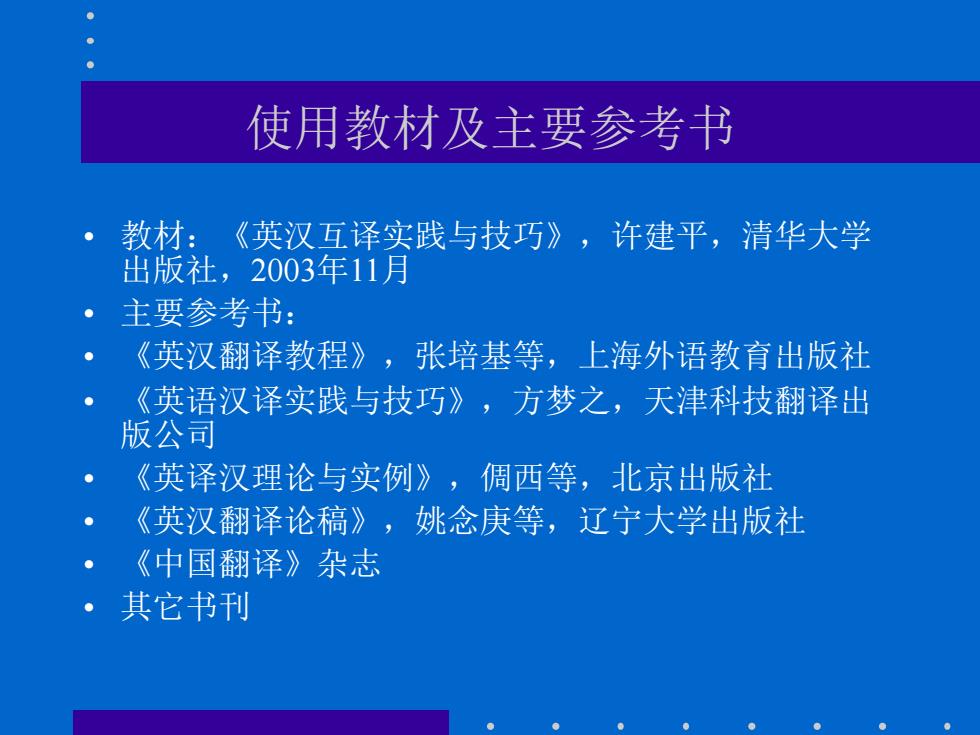
使用教材及主要参考书 教材: 《英汉互译实践与技巧》,许建平,清华大学 出版社,2003年11月 主要参考书: 《英汉翻译教程》,张培基等,上海外语教育出版社 《英语汉译实践与技巧》,方梦之,天津科技翻译出 版公司 《英译汉理论与实例》,倜西等,北京出版社 《英汉翻译论稿》,姚念庚等,辽宁大学出版社 《中国翻译》杂志 其它书刊
使用教材及主要参考书 • 教材:《英汉互译实践与技巧》,许建平,清华大学 出版社,2003年11月 • 主要参考书: • 《英汉翻译教程》,张培基等,上海外语教育出版社 • 《英语汉译实践与技巧》,方梦之,天津科技翻译出 版公司 • 《英译汉理论与实例》,倜西等,北京出版社 • 《英汉翻译论稿》,姚念庚等,辽宁大学出版社 • 《中国翻译》杂志 • 其它书刊
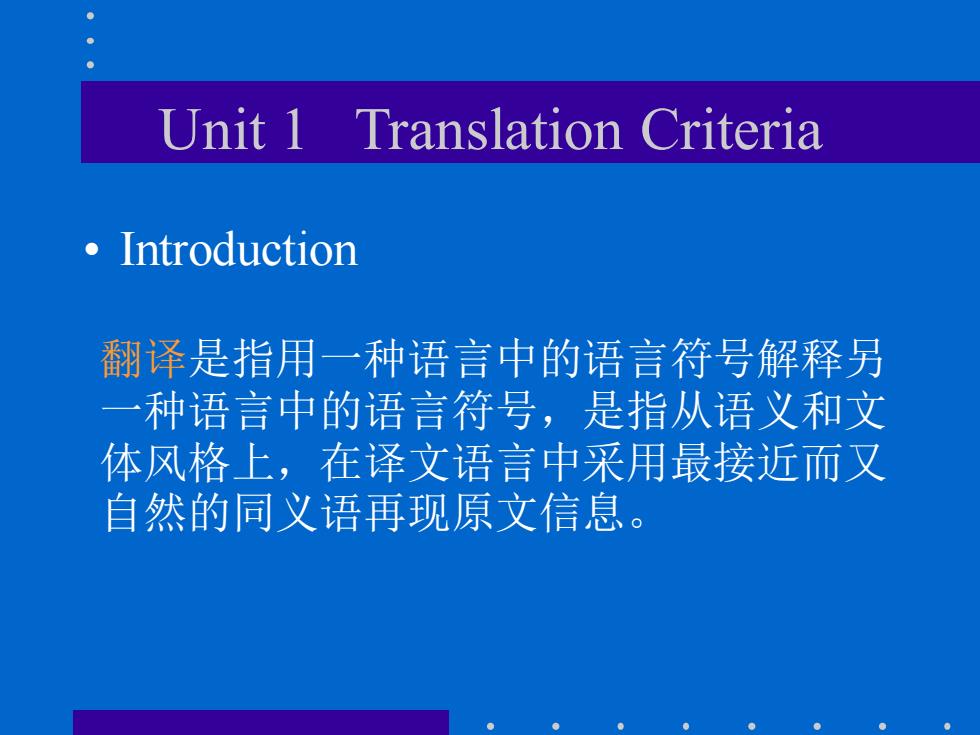
Unit 1 Translation Criteria ·Introduction 翻译是指用一种语言中的语言符号解释另 一种语言中的语言符号,是指从语义和文 体风格上,在译文语言中采用最接近而又 自然的同义语再现原文信息
Unit 1 Translation Criteria • Introduction 翻译是指用一种语言中的语言符号解释另 一种语言中的语言符号,是指从语义和文 体风格上,在译文语言中采用最接近而又 自然的同义语再现原文信息